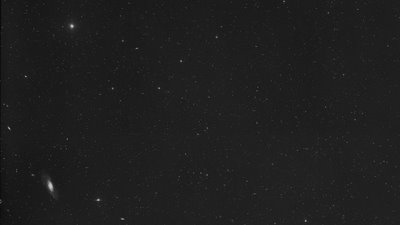M106. What's the deal?

By all accounts M106 should be seen from our sidewalk observatory in Central Park. From all the guides I've read this member of the Canes Venatici I Galaxy cloud, along with M94 and M64, is one of the brighter galaxies in the sky. Nearby M63, a member of M51 Galaxy Group or potentially a member of M101 Galaxy Group, is another easy object to detect and observe. In the last two sessions, I tried for M106 with no success using the Tak FS102 refractor. Eyepieces used included Plossl 32mm with & without Barlow 2x and Nagler 7mm.
Tony Flanders writes of M106 "...for a pleasant change, is a resonably bright and obvious galaxy." Flanders, a regular contributor to Sky and Telescope, gives a peak brightness value of 19.2 magnitudes per square arc-second (MSA).
The site linked here was presented in an abbreviated fashion in S&T a few years back. I still reference his work as the authoritative work on sub/urban observation. He covers the Messier catalog with some starhoppingtips and detailed descriptions. Using a variety of instruments in urban and suburban settings, he assigns an index value describing degree of difficulty and level of interest. Highly recommended for the novice and un-dark sky observer.
Roger Clark of Visual Astronomy of the Deep Sky fame, provides in his book a visual description of the magnitude 9.0, 20' x 6.5' galaxy, with a bright core measuring in at 8' x 3'. He goes on to mention that the surface brightness is 22.9 MSA. Clark describes the observation with an 8" to be "quite a surprise."
Brian Rachford assigns a value of 19.9 MSA for the inner 2' in his study of visual magnitudes, essentially the nucleus of the galaxy. While you're there check out this page which has a condensed list of galaxies that should be fairly easy for urban astronomers.
Lastly, I think Alan MacRobert offers his description in his book, Star-Hopping for Backyard Astronomers, that he could even see it with cloudy skies!
Now when reading all of this M106 is easy. I have no doubt that I have the field after starhopping a short distance from 3 CVn. No galactic core or nucleus. What gives? Our skies under favorable conditions in a favorable direction can yield to object with a surface brightness of 20+ MSA, maybe as faint as 20.5 ~ 20.75 MSA.
I have seen M94 and M63 a few times with instruments as small as the Tak 22x60 bins to the Teleport 10". Yet M106 I cannot get in the smaller optics. I can't believe that I have to resort to the 10" to bag it and observe it. Either I am missing the field (which I doubt) or missing some of the description between the lines.
<< Home